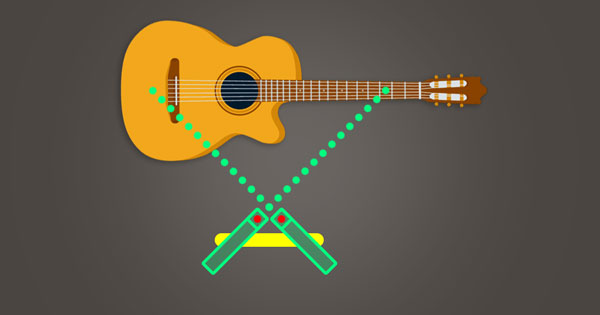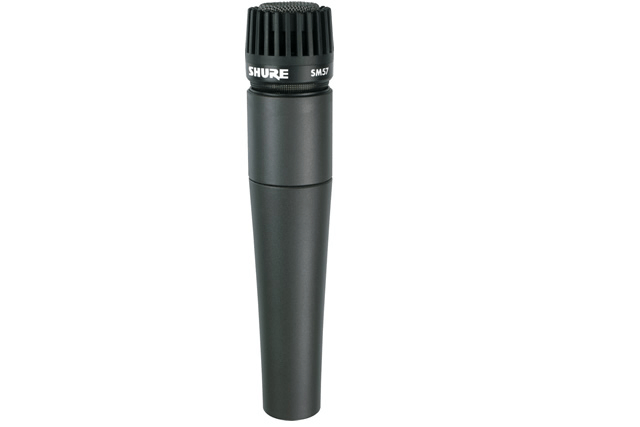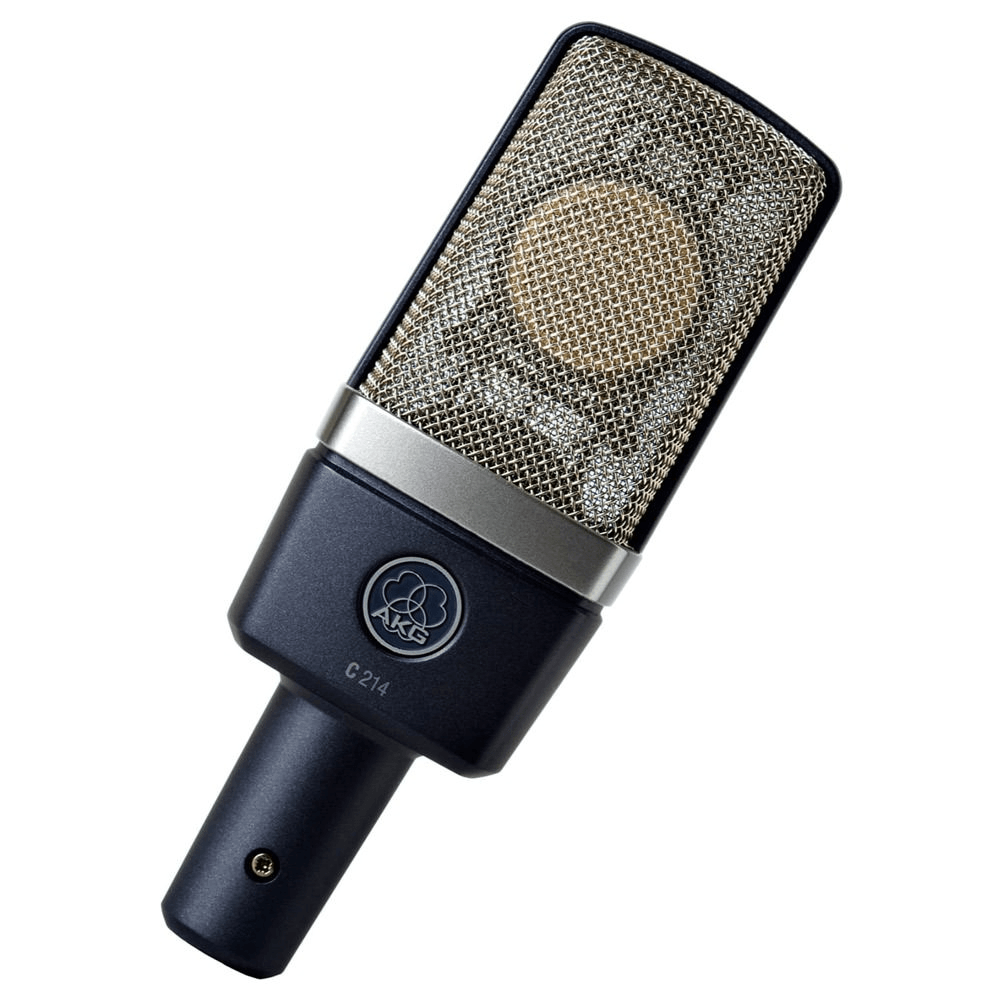Capturing the rich, nuanced sound of an acoustic guitar can transform a simple recording into a captivating musical experience. But finding the right tool to deliver studio-quality sound straight to your computer can be daunting. A USB microphone is a game-changer, offering a plug-and-play solution for crystal clear audio without the need for complex setups. Whether you’re a seasoned musician or just starting out, the perfect USB microphone can elevate your acoustic guitar recordings to new heights. Dive into our curated listicle that spotlights the best USB microphones tailored for your acoustic guitar, ensuring your music resonates with clarity and depth.
When selecting the best USB microphone for recording acoustic guitar, there are crucial criteria to consider:
- Recording Quality: The mic should capture the full range of your guitar’s tones without distortion. Look for a high bit depth (24-bit is ideal) and sampling rate to ensure professional-quality sound.
- Polar Pattern: A cardioid polar pattern is typically preferred for acoustic guitars as it focuses on sound from the front, minimizing background noise.
- Frequency Response: The microphone should have a wide and flat frequency response to accurately capture the guitar’s sound, typically ranging from 20 Hz to 20 kHz.
- Durability: The build quality should be robust enough to handle repeated use and the occasional knock or bump without affecting performance.
- Ease of Use: Plug-and-play capability is important for a straightforward set-up. Also, look for a mic with a sturdy stand or mounting options compatible with your recording space.
- Versatility: Consider if the mic can be used for other instruments or recording scenarios. Mics with adjustable settings (like gain control, mute button, and zero-latency monitoring) offer more flexibility.
- Price: It should offer good value for money, balancing price with the features and quality it delivers.
| Features | Shure MV51 | Audio-Technica AT2020USB+ | Blue Yeti USB Microphone | Rode NT-USB | Apogee MiC Plus |
|---|---|---|---|---|---|
| Approx. Price (USD)* | $199 | $149 | $129 | $169 | $259 |
| Microphone Type | Large-diaphragm condenser | Condenser | Condenser | Condenser | Condenser |
| Polar Pattern | Cardioid | Cardioid | Multiple patterns | Cardioid | Cardioid |
| Bit Depth/Sampling Rate | 24 bit/48 kHz | 16 bit/48 kHz | 16 bit/48 kHz | 16 bit/48 kHz | 24 bit/96 kHz |
| Notable Features | Touch panel control, 5 DSP modes, Retro design | Mix control, High SPL handling | Tri-capsule array, Mute button | Zero-latency monitoring, Pop shield | Professional preamp, Blend feature |
*Prices are approximate and can change over time and vary by retailer.
This simplified comparison should help users who are not technically expert to understand the major differences and make an informed choice based on what’s important to them.
Shure MV51 Digital Large-Diaphragm Condenser Microphone

Overview
The Shure MV51 is a stellar choice for recording acoustic guitar with its classic design echoing vintage Shure models but with modern digital convenience. It feels sturdy, almost like a piece of studio heritage you can take anywhere. Upon testing, the MV51’s sound quality impressed me deeply. Its large diaphragm captures the richness and nuance of an acoustic guitar, delivering a warm and clear sound that feels both authentic and refined.
What stands out is the MOTIV app, which works in tandem with the MV51. This companion app unlocks additional features such as gain control, compression, and EQ settings, which is fantastic for musicians who want to get their sound just right without sifting through complicated software.
The built-in touch panel for quick adjustments is responsive and intuitive, which means less fiddling around and more playing. The kickstand and the ability to mount it on a mic stand offer versatility that I find invaluable—whether I’m at the desk or in a makeshift home studio, the MV51 adapts.
Specs
- Transducer Type: Condenser
- Polar Pattern: Cardioid
- Frequency Response: 20Hz – 20kHz
- Bit Depth: 24-bit
- Sampling Rate: 48 kHz
- Adjustment Features: Touch Panel
- Connection Type: USB
- Integrated Stand: Yes
- Accessories Included: USB cable, user guide
Pros:
- Superb sound quality that does justice to acoustic instruments.
- Robust and attractive vintage-inspired design.
- User-friendly with touch controls and stand for ease of use.
- Versatile recording options with companion MOTIV app.
- No need for additional equipment, making it plug-and-play.
Cons:
- Slightly pricier than some other USB mics on the market.
- Larger size may not be ideal for highly mobile setups.
- The companion app is beneficial but may take time for some users to master.
Price
At its price point, which is in the upper midrange for USB microphones, the Shure MV51 does not come cheap. Nevertheless, considering its outstanding performance and build quality, it presents strong value for those serious about their craft. The pricing reflects the blend of high-quality sound, robust build, and technical versatility that the MV51 provides. For hobbyists or those with a tight budget, there might be the temptation to opt for cheaper alternatives, but for the discerning acoustic guitarist looking for longevity and quality, the MV51 is an investment that should pay off in the quality of recordings.
Audio-Technica AT2020USB+
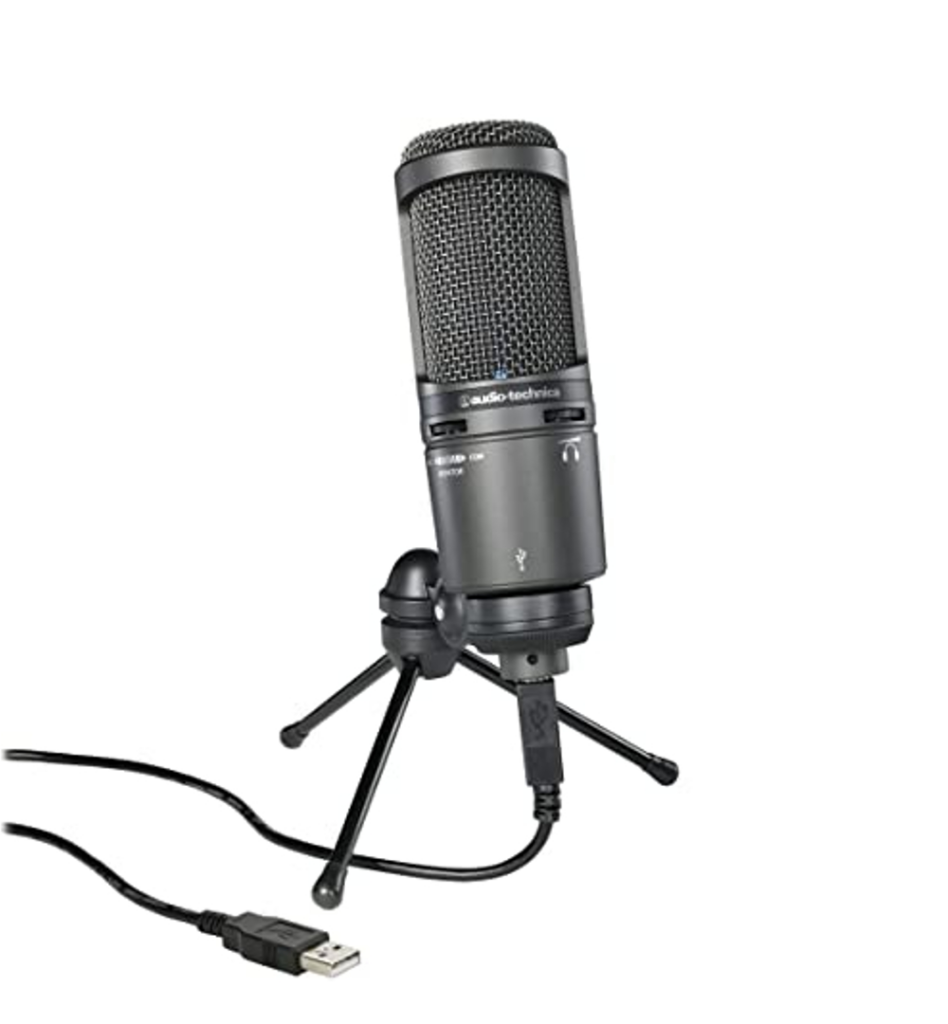
Overview:
Audio-Technica’s AT2020USB+ is a real treasure for any acoustic guitar enthusiast looking to capture the natural sound of their instrument. What stands out immediately is how this microphone marries simplicity with high-quality audio capture. It’s the kind of mic that’s plug-and-play but gives you studio-esque recordings that could make you double-check if you’re actually not in a recording booth.
The mic is a cardioid polar pattern condenser, which means it does a splendid job of focusing on the sound directly in front of it—your guitar—and ignoring unwanted noises from the sides and rear. This focus really lets your guitar’s tone shine, capturing the nuances and subtleties of the instrument.
Using this mic feels intuitive. You don’t need a PhD in sound engineering to get a good recording. Place it in front of your guitar, maybe give it a couple of test strums to find the sweet spot, and you’re good to go. The AT2020USB+ doesn’t push you to fiddle with complicated settings; instead, it graciously fades into the background, letting your performance be the hero.
Specs:
- Polar Pattern: Cardioid
- Frequency Response: 20 Hz – 20 kHz
- Sample Rate: 44.1/48 kHz
- Bit Depth: 16 bit
- Headphone Jack: Yes, with volume control
- Weight: 386 grams
Pros & Cons:
Pros:
- Crystal-clear audio reproduction that does justice to an acoustic guitar’s tonal spectrum.
- No-fuss setup, which is fantastic for musicians who just want to concentrate on their music rather than technical details.
- The included headphone jack for real-time monitoring is invaluable for immediate feedback without any latency.
- It feels sturdy and reliable, which gives reassurance for its longevity.
Cons:
- Some may find the bit depth limited to 16 bit a downside if they’re looking for professional studio standard recordings at 24 bit.
- The minimalistic design and feature set might not appeal to tech enthusiasts hoping for more bells and whistles.
Price:
Now, talking about the wallet pain, or rather the lack of it, the AT2020USB+’s price is like hitting that perfect harmony—it’s not dirt-cheap, letting you know that it isn’t a compromise on quality, but it’s not exorbitantly priced like some mics that seem to include a ‘fame tax’. It’s priced fairly for what it offers, which is top-notch clarity and reliability.
In summary, the AT2020USB+ is a standout option for anyone looking to record their acoustic guitar. Its strength lies in its simplicity and excellence in audio fidelity. Sure, there may be pricier mics with extra features, but this gem from Audio-Technica really hits the sweet spot for the average user who wants a great recording without getting bogged down in technicalities.
Blue Yeti USB Microphone
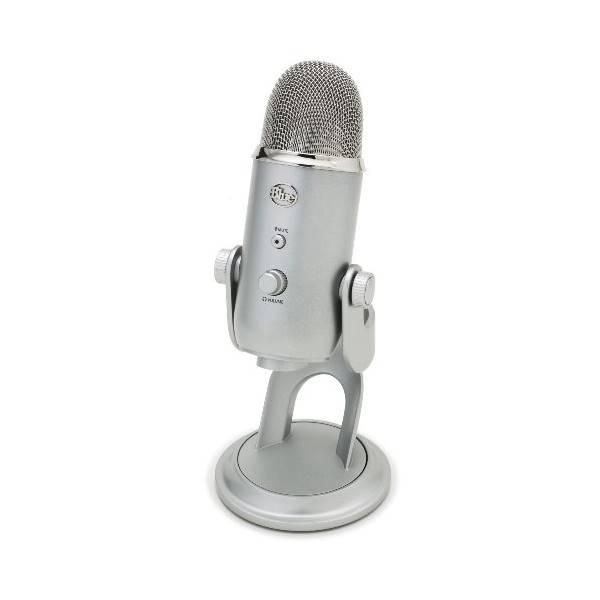
Overview
The Blue Yeti USB Microphone is an incredibly popular microphone amongst podcasters, streamers, and musicians, and for good reason. Its versatility in recording options and ease of use makes it a strong contender for capturing the rich tones of an acoustic guitar. Straight out of the box, what strikes you is its retro-style design that feels robust and well built.
When using it to record the delicate nuances of an acoustic guitar, the Yeti doesn’t disappoint. With its multiple pattern settings—cardioid, bidirectional, omnidirectional, and stereo—it’s a breeze to find the right setup that best captures the instrument’s body and depth. I find the cardioid mode exceptional for focusing directly on the strings and sound hole, minimizing room ambience and isolating the guitar’s truest sounds.
Another great aspect of the Yeti is its no-fuss setup. The plug-and-play USB connectivity means you’re up and running without wading through intricate driver installations. Plus, a built-in headphone jack with real-time monitoring capability helps in making on-the-fly adjustments—a feature every acoustic guitar player will appreciate for fine-tuning their mic placement and playing dynamics.
Specs
- Pickup Patterns: Cardioid, Bidirectional, Omnidirectional, Stereo
- Connectivity: USB
- Frequency Response: 20Hz – 20kHz
- Sample Rate: 48kHz
- Bit Rate: 16-bit
- Headphone Amplifier: Impedance – 16 ohms
Pros:
- Multiple pattern settings provide recording versatility.
- Sturdy build quality paired with an attractive aesthetic.
- Real-time monitoring via headphone jack.
- Simple, plug-and-play operation.
Cons:
- It’s relatively bulky size may not suit all recording setups.
- At 16-bit, some may prefer a higher bit depth for professional recordings.
Price
The Blue Yeti USB Microphone is typically priced at around $130, although you might find it on sale for less. Given its features and performance, it sits comfortably in the mid-range price bracket of USB microphones and offers good value for its versatility and quality.
Personal Opinion
I’ve recorded acoustic guitars with the Blue Yeti, and I must say, it’s a solid choice for musicians who want good quality without getting into the weeds of professional recording gear. While it might not match up to high-end mics that professionals use in studios, it’s hard to beat in its price range. The convenience of USB connectivity and the ability to switch recording patterns make it particularly appealing for a home studio or a musician on the go. However, if your priority is ultra-high fidelity and you need better than 16-bit/48kHz, you may want to consider investing in something more advanced.
For hobbyists and semi-pros looking to record acoustic guitar at home or for sharing their creations online, the Yeti offers a fantastic blend of quality, simplicity, and practical features.
Rode NT-USB Condenser Microphone
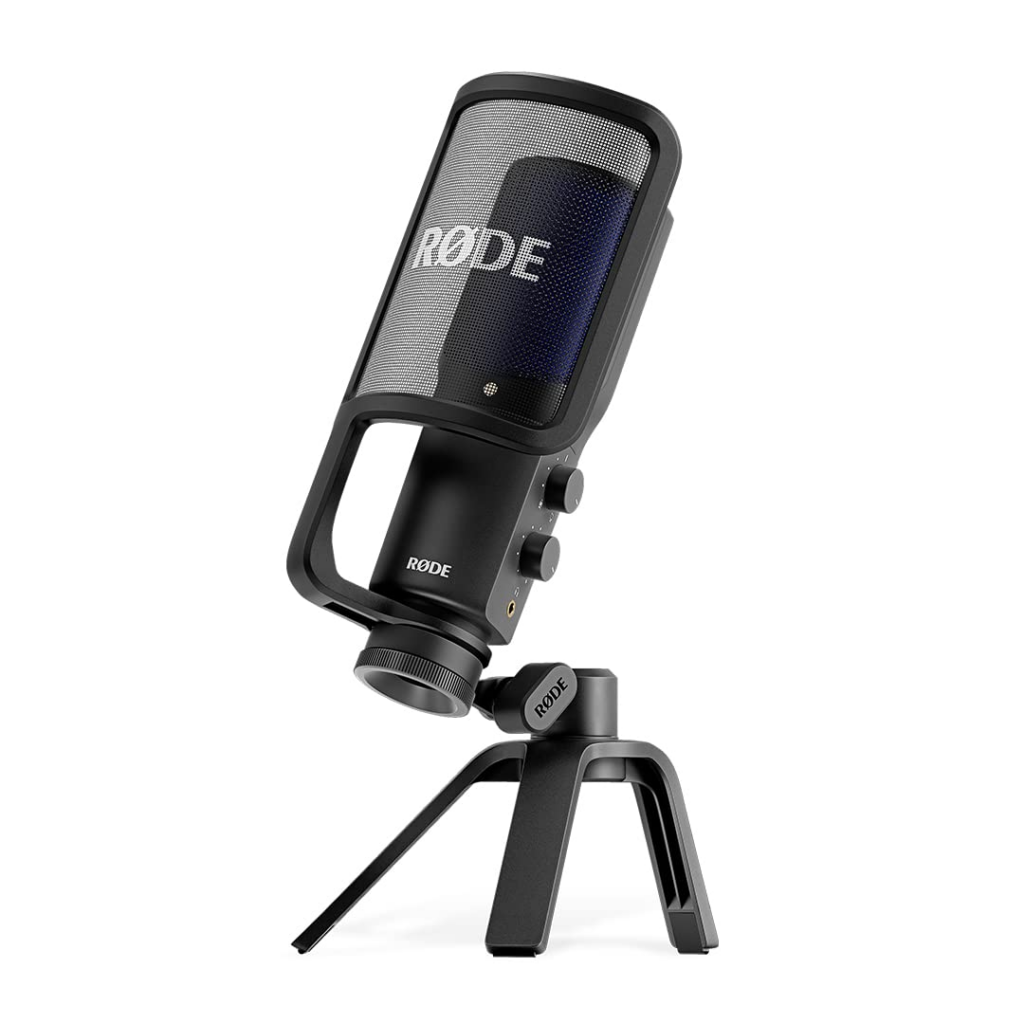
Overview
The Rode NT-USB Condenser Microphone is an exceptional piece of audio equipment tailored for musicians, podcasters, and anyone in need of studio-quality recording at home or on the go. With its sleek design and robust build, this USB microphone stands out in the crowd, especially for capturing the nuanced sounds of an acoustic guitar.
Upon testing the Rode NT-USB, I was immediately struck by its clear and natural audio capture. It felt as though the microphone was designed with the acoustic guitarist in mind; it picks up every string pluck with phenomenal clarity and presence. Notably, the cardioid pickup pattern does an excellent job at isolating the sound of your guitar, minimizing ambient noise—a feature crucial for recording in less-than-perfect acoustic environments.
The NT-USB comes with a pop shield, tripod desk stand, ring mount, storage pouch, and a 6-meter USB cable, making it a highly convenient package for performers who need a reliable setup with minimal fuss.
Specs
- Acoustic Principle: Pressure Gradient
- Active Electronics: JFET impedance converter with bipolar output buffer, A/D converter 16bit 48kHz
- Polar Pattern: Cardioid
- Frequency Range: 20Hz – 20kHz
- Maximum SPL: 110dB SPL
- Power Options: USB powered
- Output: USB Output
- Computer Connectivity: USB – simultaneous I/O Mono input, stereo output
- OS Requirements: macOS 10.10 or later / Windows 7 or later
Pros:
- The overall sound quality is superb, especially for an acoustic guitar; the high range is crisp without being harsh, and the low end is warm.
- Being plug-and-play with both Mac and PC makes it accessible for a broad spectrum of users; no need for additional drivers.
- Having direct mixing control between the mic input and source output is advantageous for real-time monitoring adjustments.
- The inclusion of a pop filter tailored to the microphone is a thoughtful touch that helps safeguard your recordings from plosive sounds.
- The build quality gives a sense of durability and professionalism.
Cons:
- It may be more expensive than some alternatives, which could be a downside for budget-conscious buyers.
- Although its directivity is great for sound isolation, it may require careful positioning to capture the perfect guitar tone.
- Some users might miss having multiple polar patterns for versatile recording scenarios.
Price
Regarding the price, the Rode NT-USB strikes a balance between affordability and professional-grade quality. You’re looking at an investment that’s justified by its stellar performance and durability. While precise pricing varies by retailer and region, it generally sits at a mid-range price point within the USB microphone market.
In my opinion, the Rode NT-USB represents a smart choice for recording acoustic guitars. Its simplicity in setup, combined with its acoustic performance, means that musicians can focus more on playing and less on tweaking settings. This microphone’s capability to deliver studio-like recordings straight out of the box is something both amateurs and professionals can appreciate. Whether you’re laying down tracks or performing live streams, the Rode NT-USB could be the working core of your audio setup, faithfully capturing every nuance of your guitar’s sound.
Apogee MiC Plus USB Microphone
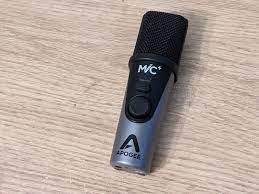
Overview:
The Apogee MiC Plus is a highly portable and professional USB microphone designed specifically for recording music on the go or in a home studio setting. It’s an excellent choice for capturing the rich, dynamic sound of an acoustic guitar, thanks to its studio-quality cardioid condenser microphone capsule.
Upon testing, the MiC Plus impresses with its clear and natural sound reproduction. Its plug-and-play capability makes it incredibly user-friendly, eliminating the need for additional preamps or audio interfaces which can be burdensome for non-technical users or those wanting a swift setup. The inclusion of a gain control knob on the mic itself is a significant advantage, allowing for convenient adjustments to ensure the optimal recording level. Compared to other USB microphones, the MiC Plus stands out with its blend of simplicity and professional performance.
Specs:
- Microphone Type: Cardioid Condenser
- A/D Resolution: 24-bit/96kHz
- Frequency Response: 20Hz – 20kHz
- Connectivity: USB
- Features: Gain control knob, Blend feature for zero-latency monitoring, No configuration required
- Included Accessories: Tripod, microphone stand adapter, USB cables
Pros & Cons:
Pros:
- Exceptional audio quality for acoustic guitars with rich detail and clarity.
- Highly portable and easy to set up, encouraging impromptu recording sessions anywhere.
- The gain control is intuitive, allowing for quick adjustments to avoid clipping or low volume issues.
- Zero-latency monitoring feature is excellent for real-time playback, providing instant feedback without audio delay.
Cons:
- Pricier than some other USB microphones, which might be a consideration if on a budget.
- While versatility is a strength, those looking for multiple pickup patterns (like omnidirectional or bidirectional) won’t find that here – it’s solely a cardioid mic.
- The minimal design may leave users wanting more on-body controls or indicators.
Price:
Given the professional level of audio capture it provides, the Apogee MiC Plus justifies its higher price point, often found in the ballpark of $200 to $250. It’s an investment in superior sound quality and ease of use for musicians and content creators who need reliable, top-notch performance.
In my opinion, for acoustic guitar enthusiasts or singer-songwriters, the Apogee MiC Plus is an outstanding USB microphone that marries convenience with quality. The sound it captures from an acoustic guitar is genuinely reflective of the instrument’s natural tone, ensuring that recordings are true to the source. The higher price might make some think twice, but for those serious about their craft, the investment is worth every penny. The stylish design and robust build also mean this mic won’t look out of place in any setup, adding a touch of class to your recording sessions.
Conclusion
In sum, choosing the best USB microphone for your acoustic guitar is about balancing audio fidelity, ease of use, and budget requirements. The options we’ve explored offer a variety of features for both amateur and professional needs. From the high-resolution capture of studio-quality sound to the convenience of plug-and-play operation, these microphones promise to enhance your acoustic guitar recordings, providing a rich and authentic sound that can elevate your music production to the next level.
While USB microphones excel at capturing studio-quality sound directly into your computer, sometimes your performance benefits from freedom of movement and flexibility. If you’re looking to record acoustic guitar without being tied down by cables, opting for a wireless lavalier microphone can offer exceptional sound clarity combined with effortless mobility.
FAQs
1. What should I look for in a USB microphone for recording acoustic guitar?
Look for a microphone with a cardioid pickup pattern to capture sound directly from the guitar while minimizing background noise. A high-quality converter and a good frequency response are also important for clear and accurate sound reproduction.
2. Can USB microphones provide studio-quality recordings?
Some USB microphones are indeed capable of studio-quality recordings. Models with higher bit-depth and sampling rates, as well as those with larger diaphragms and better built-in preamps, can deliver professional-level sound.
3. Do I need any additional equipment to use a USB microphone with my acoustic guitar?
Generally, no. USB microphones are designed to work out of the box with your computer. However, depending on your setup, you may want to consider a microphone stand, pop filter, or acoustic treatment to improve recording quality.

































.png)


